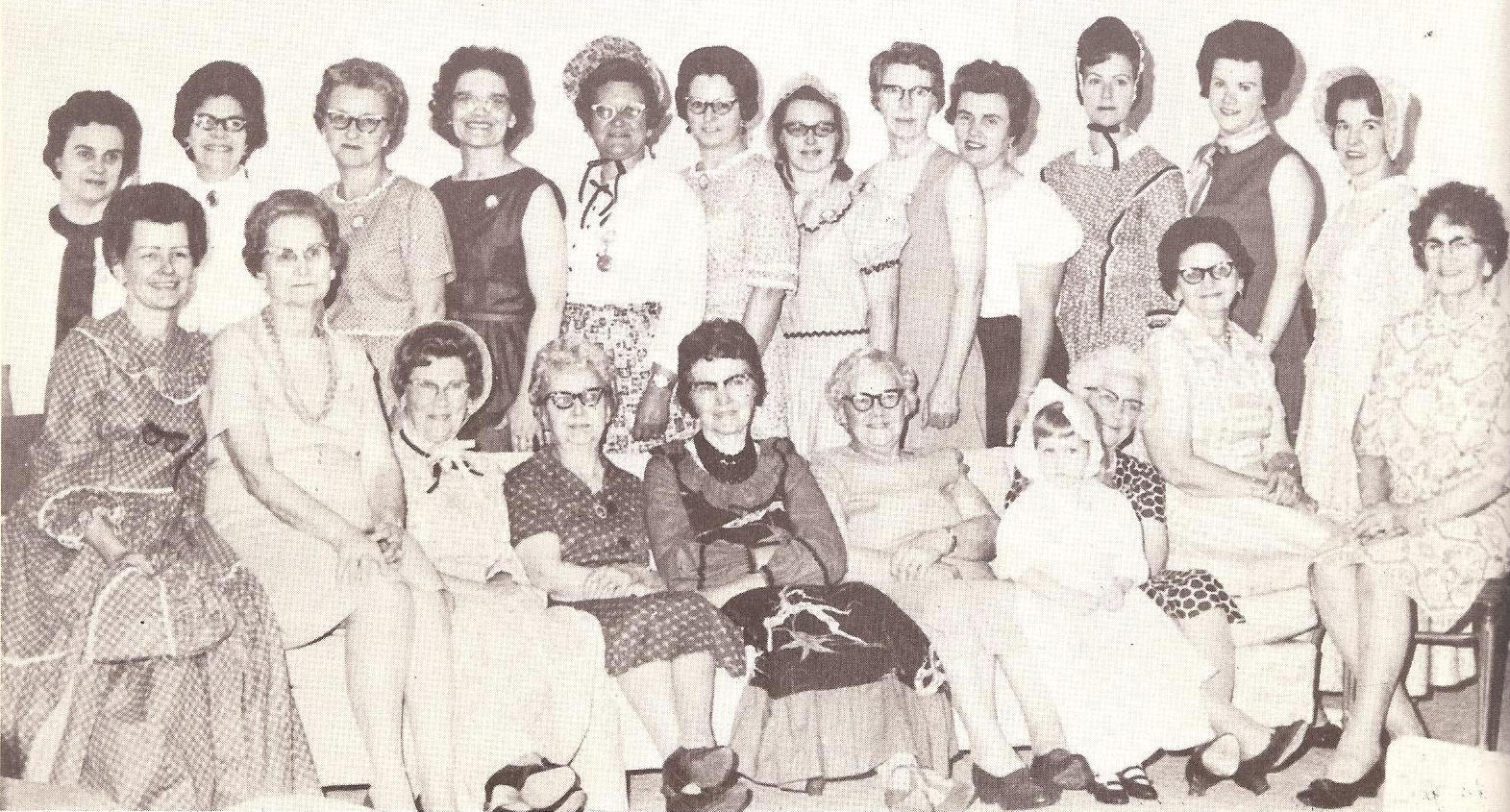The American Legion Auxiliary
Samuel Reid Post #334by Blanche Mehlow
Early in the spring of 1922, the ladies, who thought they were eligible, met at the schoolhouse for the purpose of organizing an Auxiliary to the Samuel Reid Post number 334. Mrs. E.S. Genung, who was a member of the LaPorte Auxiliary previous to her moving here, presided over the meeting and explained the organization. The Legion was holding it's regular meeting at the schoolhouse the same evening. They received a great deal of help from them, especially Commander E.J. Stout. That evening twelve ladies signed as members and Mrs. Genung was to act as president until the organization could be perfected. A committee was appointed to arrange for a local constitution.
On May 1, 1922, eight of the charter members and three prospective members met to complete the organization. Mrs. Genung presided over the meeting and opened with prayer. The proposed constitution was read and accepted. Then the electing of permanent officers took place. Mrs. Hattie Hanson was elected president. Mrs. Genung, who was the pastor's wife, was unanimously as chaplain. Mrs. Ethel Krink was elected as secretary and Miss Mary Nelson as treasurer.
The application for Unit Charter was signed by Commander Earl J. Stout on April 1, 1922 and the final endorsement is signed by Mrs. Donald Macrae, Department President, on April 22, 1922. The National endorsement was signed by Pauline C. Curnick, National Secretary on April 18, 1922. The Unit is officially shown having been chartered on April 18, 1922. The following names appear on the application for Unit Charter: Mary S. Genung, Hattie Nervig Hanson, Fae A. Stout, Sarah S. Mills, Annie Johnson, Bertha Stevenson, Evelyn M. Scott, Gladys Helland, Ethel M. Krink, Mae Lincoln, Mabel Thompson, Ida Snyder.
The application for Unit Charter was signed by Mary S. Genung, Acting President.
The records are missing until Feb. 9, 1926. Mrs. Sam Krink was president at that time. Some of the activities were sewing carpet rags for Veteran's hospital at Knoxville, children's clothing, hemming towels for members for which we were paid, also quilting not only for members, but others as well and articles for the supply shelf at the Des Moines office.
Later the Post disbanded and it was called a "Widow Unit," but it had a record of sending more supplies to Des Moines than any other unit.
Later after World War #2 the Post was re-organized and the membership also grew. The building now housing the Bowling Lanes was built for the Legion and Auxiliary and meetings were held there instead of the homes. One of the projects was helping furnish the kitchen, and as we raised the funds, we bought dishes (with Auxiliary Emblem) silverware, stoves, electric oven, pots and pans. A kitchen shower was held and was a great help. Later folding tables were purchased and between Unit and Post, chairs were furnished. Material
